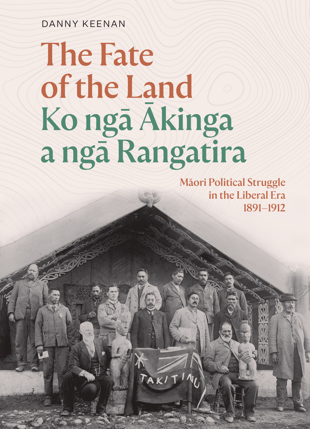This is a timely book because it adds much to the distressing story of the concerted Māori effort to slow the alienation of their land and reveals more about this key tussle than has formally been available. Keenan builds on, critiques and extends the work of several Pākehā historians including Keith Sorrenson, Alan Ward, W.H. Oliver, Judith Binney, Graham Butterworth, Paul Moon, Richard Hill, the legal historians David Williams and Richard Boast, and the geographer J.S. Duncan, all of whom criticised Keith Sinclair for claiming that the Liberals paid a ‘fair’ price for Māori land. Ranginui Walker’s major biography of Āpirana Ngata and Joe Pere’s work on farming on the East Coast also added much useful information on the continued battle waged by Ngata on behalf of Ngāti Porou.
Keenan adds a more truly national assessment than any earlier scholar by concentrating on the largely unheralded efforts of Te Kotahitanga (‘unity’ movement), as well as the Tainui-based Kingitanga. He builds significantly on the now ageing work of American academic John Williams (1969) and Lindsay Cox (1993). Keenan’s Māori focused book fills a serious gap in our historiography. His assessment of the complex contributions of the ebullient James Carroll is also fascinating; perhaps he should undertake a full biography with appropriate scholars from Ngāti Porou and Ngāti Kahungunu? Keenan makes it abundantly clear that Carroll is so important that he desperately needs a full and possibly multi-authored biography. Keenan is also the first historian to add a Taranaki perspective on the Liberals’ land buying that stretches well past the troubling story of Parihaka.
Many New Zealanders know that the great bulk of Māori land alienation occurred across the period of the New Zealand Wars, that is, in the 1860s and into the 1870s. Few are aware that most of the South Island had been purchased by the early 1850s. Even fewer know that the Liberals, between 1890 and 1912, had purchased nearly four million acres of Māori-owned land at the rock-bottom price of four shillings per acre, a transfer of wealth made worse by the fact that the remaining land from earlier sales held in reserves was both scarce and of poor quality. In contrast, the Liberals redistributed just over a million acres of land held in the great estates, the Government paying an average of around £4 per acre, or 20 times as much; a price much closer to the market value of farmland. Estate owners could also hold onto 640 acres of their home blocks and were much better compensated than their Māori peers.
Keenan must be congratulated for explaining the complexities of the Liberal’s ‘rescue’ of Māori holdings in such clear language. He also helps the reader by structuring the book in a very logical fashion and sensibly reveals how Māori ownership was systematically stripped away before 1890. Sketching in this background is important because latter-day government policy was clearly shaped by what had gone before.
Read Tom Brooking's full review here.


